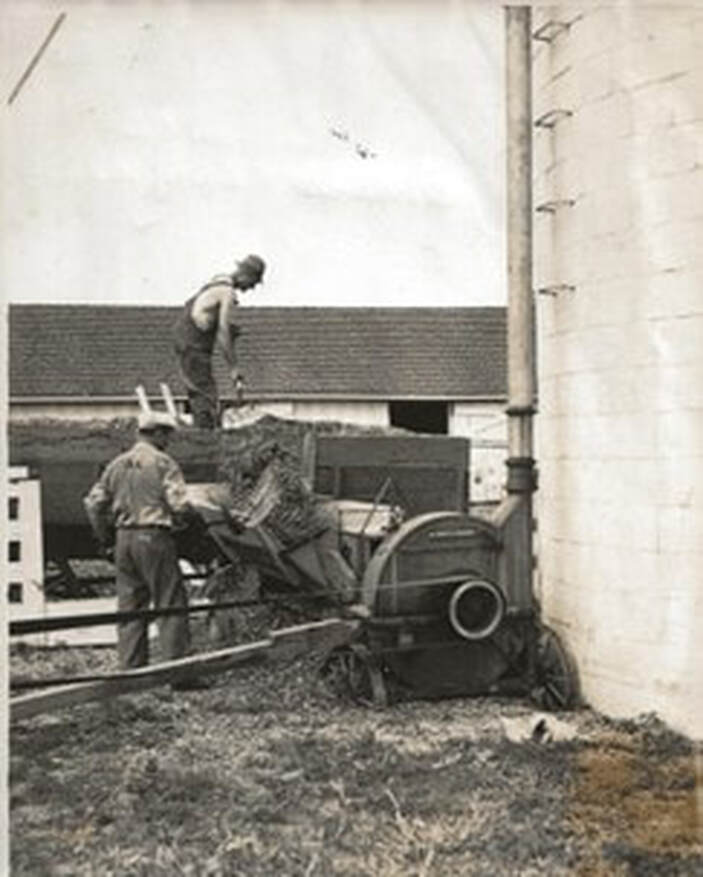|
|
by Marcia Napier, Grain Valley Historical Society Today, when we mention Sni-A-Bar Farms, we often think only of the famous purebred Shorthorn show cattle or the grade cattle experiments that were carried out over twenty plus years. But Sni-A-Bar Farms was equally well-known for other experiments carried out by the University of Missouri College of Agriculture and the United States Department of Agriculture. The contribution which Sni-A Bar Farms made toward the improvement of soil fertility and the introduction of new crops was equal in importance to its contribution to the improvement of livestock. In 1929, the first test in the use of hybrid corn was conducted at Sni-A-Bar in cooperation with the University of Missouri. It resulted in an average production of 90 bushels to the acre as compared with 72 acres in check plots. In 1930, a field was seeded to Korean lespedeza, the first field use of this crop in Missouri. The results secured from this experiment contributed largely to the introduction of the crop for pastures and hay throughout Missouri. The use of lespedeza for pastures as a supplement to blue grass revolutionized the grazing practices of the state and was considered one of the most outstanding contributions which Sni-A-Bar made to agriculture, and they made a lot! Atlas sorgo as a silage crop was also introduced by Sni-A-Bar into the state. Under normal growing seasons it produced 2 to 4 tons an acre more than corn, and in periods of drought when corn was almost a complete failure, it yielded from 8 to 10 tons per acre. It became one of the most widely used silage crops in Missouri. Experiments in pasture improvement were shown by the increased carrying capacity. When first established, 1000 acres devoted to pasture could not carry 200 cattle without supplemental feeding in late summer. By mowing weeds and keeping grass ahead of the cattle, 600 head could be grazed in the same area with a surplus for winter pasture. Crops planted at Sni-A-Bar were also loaded into the many silos on the farm and used to feed the cattle, horses, mules, pigs, sheep, poultry and occasionally goats that were raised there!
Some information for this article came from A Summary of Pasture Investigations Conducted at Sni-A-Bar Farms in 1931, Cooperative Corn Hybrid Yield Test, 1930, and Sni-A-Bar Pasture Management Studies. All three are reports from the United States Department of Agriculture and the University of Missouri College of Agriculture. They may be found in the library at University of Missouri, College of Agriculture, Columbia, Missouri. For more information about Sni-A-Bar Farms, visit the Grain Valley Historical Society. We’re open on Wednesday from 10 AM – 3 PM or by appointment. Call (816)686-7582. Comments are closed.
|
Categories
All
Archives
May 2024
|
Grain Valley NewsGrain Valley News is a free community news source published weekly online. |
Contact Us |



 RSS Feed
RSS Feed
